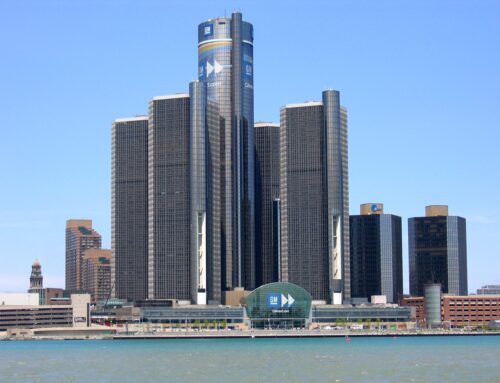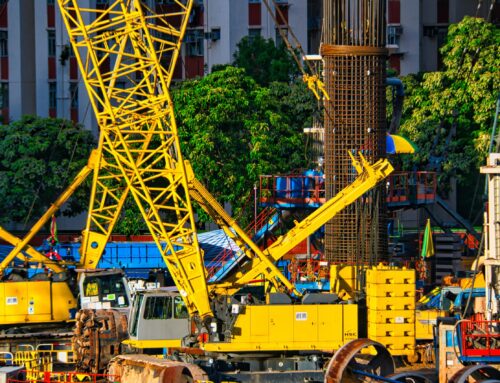Description and Details
In 2011, the former Prime Minister and current President of Turkey, Recep Tayyip Erdogan, announced the Istanbul Canal project to alleviate the traffic pressure of the Bosphorus Canal, reduce the potential risks of ships loaded with dangerous materials, and promote the country’s economic development. Ships can pay fees to the Istanbul Canal to jump the queue in the Bosphorus Canal, where merchant ships can pass freely but have to wait in line. The estimated cost is $25 billion, with $10 billion for building bridges on both sides and $15 billion for building the canal.
The canal will be constructed in the western part of Istanbul and will link the Marmara Sea to the Black Sea. It will have a length of 45 km, a width varying from 400 to 1,000 m, and a depth of up to 25 m. Six bridges will be constructed to connect the canal by land with the outskirts of the European side of Istanbul. Around 160 ships and tankers are expected to cross the canal annually.
The reasons for building the Istanbul Canal are related to Turkey’s economic growth. Though Bosphorus Canal is located in Turkey, the passage fee doesn’t boost the country’s economy. The Montreux Convention signed in 1936 prioritized “freedom to pass through the Straits” in operation principles. It guarantees “complete freedom” of passage for all civilian vessels in times of peace. If Turkey can charge the cargo in Istanbul Canal, the profit can be used to create better living conditions for citizens. On the Black Sea side, the Istanbul Canal can connect with a new $10 billion airport and a new highway. The three interrelated projects feed and support each other, further supporting Turkey’s economy.
However, Russia opposes the project plan firmly, in consideration of their national security. Erdogan may use the Istanbul Canal to renegotiate or withdraw from the Montreux Convention. For Russia, Montreux is a way to keep Western naval ships out of the Black Sea. If the canal allows enemy navy passage or if the Montreux Convention is amended, Russia will face potential threats.
Other than political aspects, environmental impact places the Istanbul Canal under criticism. The canal will be dug in a wooded area and will eliminate Lake Durusu. Lake Durusu is one of Turkey’s largest bodies of freshwater and provides 40% of Istanbul’s drinking water. Sea water intrusion from digging the canal may destroy the freshwater source and cause a water shortage in Turkey. Further, the project may destabilize the marine environment, upsetting the natural equilibrium of currents and counter currents. There are two flows in Bosporus, with the bottom flow going north being denser than the surface flow coming south because the Marmara Sea is saltier than the Black Sea. The construction of the Istanbul Canal may undo the flow equilibrium. Turkey used to discharge treated water at the location where Bosphorus meets the Marmara Sea, so the water is carried by undercurrent to the north. The canal will challenge the wastewater treatment system and may suck polluted water from the Black Sea to Lake Durusu and cause pollution to the drinking water source.
The land retrieval aspect of the Istanbul Canal is also concerning. Land in Turkey is a highly sought-after commodity, and 30% of the canal route is privately owned. With Turkey’s population growing rapidly from around 3 million people in 1980 to more than 15 million today, land for future growth is under high consideration. Constructing the canal will result in 350 hectares of deforestation, and the canal will run through districts home to more than 1 million people. The estimated completion date is 2027.
CEE subjects: Construction Engineering and Management, Environmental Engineering, Geotechnical Engineering, Hydraulics and Hydrological Engineering, Water Quality and Health, Earth Systems, Environmental Fluid Dynamics
Discussion Questions
- Should the canal be built? How can the Turkish government resolve problems like diplomatic issues with Russia, environmental problems, and land conflicts?
- What are other advantages or disadvantages of the canal being built?
- What sustainable aspects could be included in the design of the canal to limit its impacts on the environment or ensure its use remains adaptive for future generations?
References
- Popular media/news references
- Istanbul Canal | All details and information
- Turkey’s ‘crazy’ and controversial Istanbul Canal project
- A $15bn new canal for Istanbul
- A Canal Through Turkey? Presidential Vote Is a Test of Erdogan’s Building Spree
- Will Istanbul’s Massive New Canal Be an Environmental Disaster?
- Sliding in the Polls, Erdogan Kicks Up a New Storm Over the Bosporus
- A devil’s current, a hairpin turn: Aboard a tanker in the risky Bosporus strait
- Canal Istanbul: Erdogan’s megaproject raises global concerns | DW News
- New Dam in Turkey Threatens to Flood Ancient City and Archaeological Sites
- Since the Montreux Convention, The possibility of accidents in the Bosphorus increased eightfold




Leave A Comment